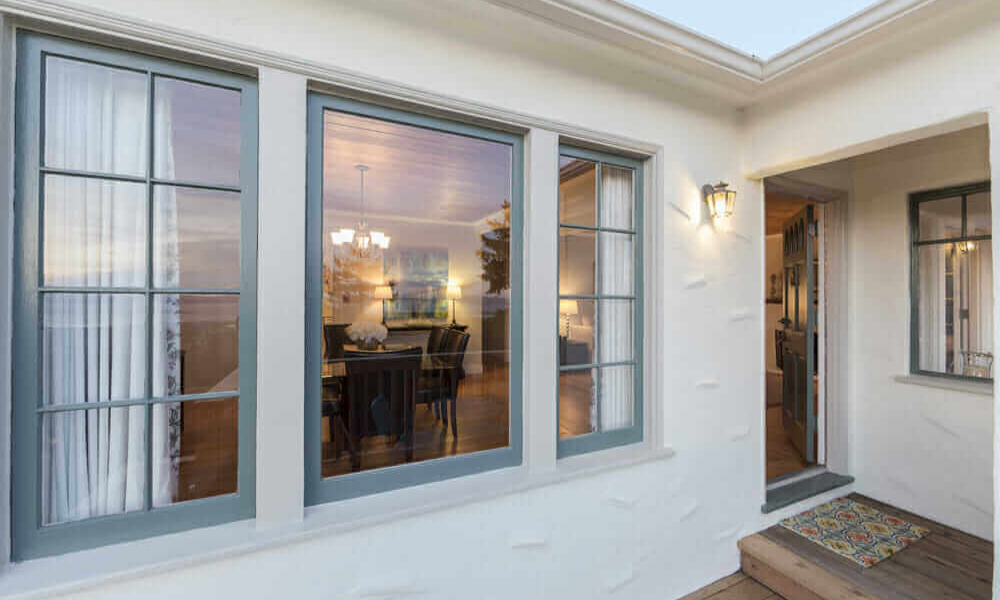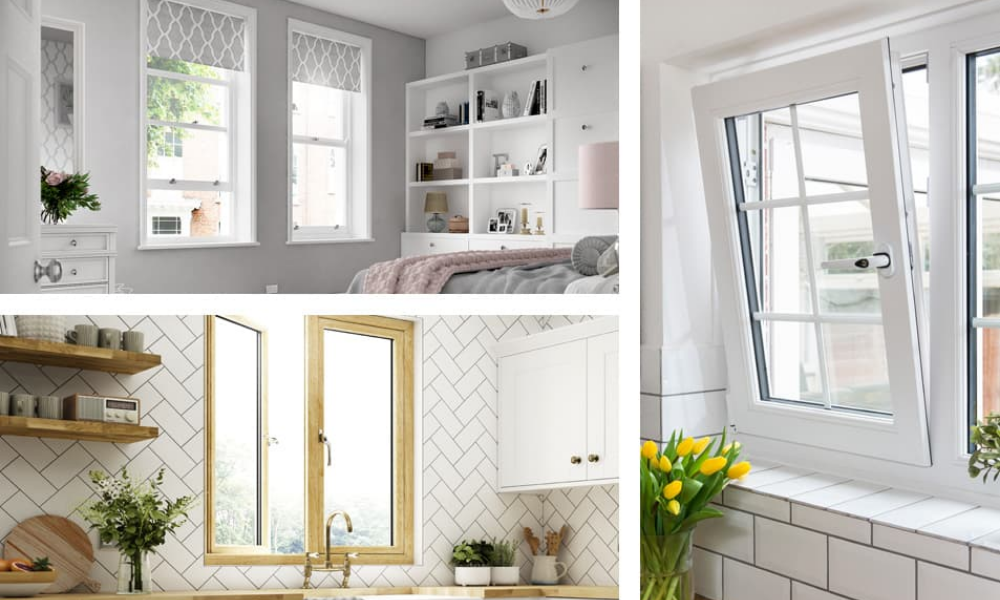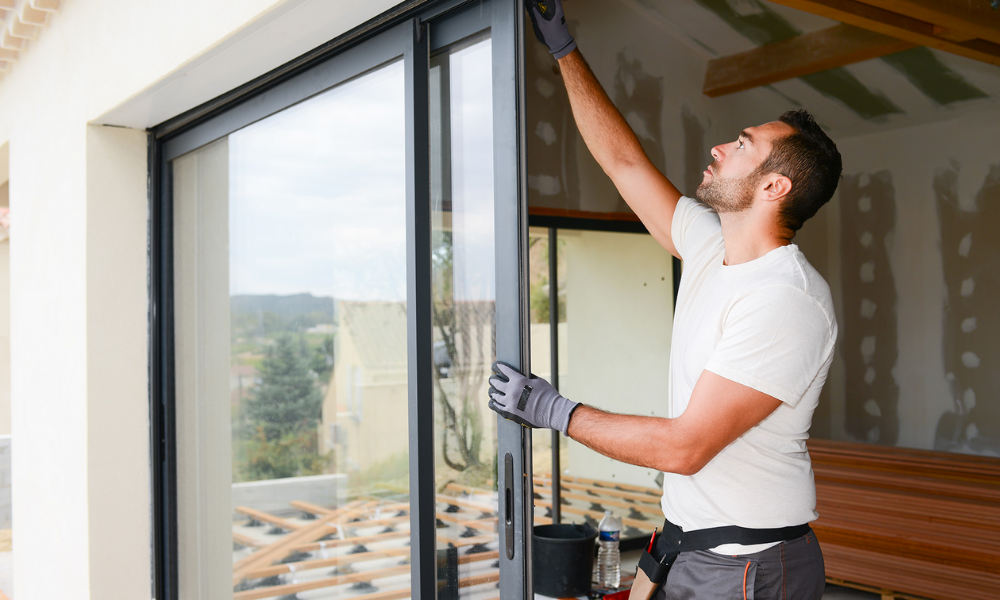In your home, windows serve a variety of functions. By blocking draughts, managing temperature, and withstanding the elements, a decent window can help you save money on your energy bills while also improving the look of your home. But, with so many different types of windows available, how can you choose which one to buy? Replacing your old, drafty windows with new ones can help to improve the comfort of your home and save you money on your energy bills. But before you go out and buy a new set of windows, there are a few things you need to keep in mind.
Replacement windows can be used to
- Lower your energy costs,
- Improve your home’s market value by bringing in more natural light and improving views. Improve your comfort by decreasing room temperature swings and draughts,
- Improve the ventilation in your home,
- UV radiation can cause damage to carpets, floors, and furniture,
- Enhance security and protection,
- Enhance the aesthetics and design style of a home.
Here are some points you need to consider when selecting new windows for your home:
Prioritize your Tasks
Determine which window characteristics are most important for your home as you begin your window shopping. Natural lighting should be a top consideration if you’re planning a new home. Or, if you’re replacing your windows, you may already be aware of the requirement for improved thermal performance.
You’ll be better equipped to choose a window if you take the time to examine your requirements.
When getting began, think about the following questions:
- What issues have you encountered with your current windows?
- Do you require a movable window?
- Is it essential to have plenty of natural light?
- Is the region exposed to the sun, or is it shaded?
- What kind of look are you after? Is this a window for a new or old house?
- Do you live in a bustling neighborhood?
- Is it necessary to reduce noise?
- What is your budget?
- Do you want to save energy with energy-efficient windows?
Make an Effort to Conserve Energy
Because high-performance, ENERGY STAR®-certified windows may save you an average of 45 percent on your energy bill, energy efficiency should always be a top priority. These windows also reduce your carbon footprint and help you qualify for green building programs.
Here are three crucial traits to keep an eye out for:
1. Performance Ratings that Are Certified
The U-factor and the Energy Rating are two approaches to assessing window performance (ER). The U-factor represents the rate of heat transport. A low U-factor indicates that the product is highly insulated, so search for it if thermal performance is crucial to you. It is especially significant in your home’s coldest areas, such as windows and doors facing North or East; nevertheless, low U-factor windows and doors benefit all orientations to reduce overall heat loss. In Canada, it is recommended that windows and doors have a U-factor of 1.4 W/m2K or less. The solar gain effect of the window is included in the ER rating, which is an alternative rating. The ER indicates how energy efficient a window is. The greater the ER, the more energy-efficient the window is. The ER of good-performing windows and doors is 29 or higher. High-ER windows are very effective in North and East orientations to increase sunlight exposure. In contrast, low- to mid-ER goods are advised for sunny exposures like South and west orientations. Windows and doors must have a maximum U-factor of 1.22 W/m2K or a minimum ER of 34 to be ENERGY STAR certified.
2. Description
Type, material, and glazing will all be included in the description. In this section, you’ll want to mention whether the window is fixed (i.e., it doesn’t open) or operable (i.e., it does open). Operable windows come in various styles, which will be specified on the label.
It would help if you also considered the glass type, which impacts the window’s energy efficiency and the quantity of light it lets in. Look for a Low-E glass coating on a double or triple glazed window to manage your home’s temperature and save money over time. It can also be used to reduce noise. Combine a Low-E glass layer with an argon gas fill to improve thermal performance. Consider a transparent glaze rather than a tinted glaze if you want more natural light. Your window installer can assist you in deciding which glaze is best for you.
3. Application for Certification
The Canadian Standards Association certifies all ENERGY STAR® windows based on energy efficiency. An impartial third party tests and verifies Windows to assure that it will function properly. The National Fenestration Rating Council (NFRC) provides a separate label for each window that contains information about its energy performance. The U-factor, the SHGC, and the VT are all included on this label. The air leakage rate (AL) is another valuable piece of information, and you can use it to determine how much cold or hot air will seep through cracks around the window. All of these factors should be considered when choosing energy-efficient windows.
Additional Factors to Consider
When it comes to purchasing a window, you must often choose between energy efficiency and the price you see at the store. While a high-performance, energy-efficient window may be more expensive, it will last considerably longer and save you money.
Make sure you touch and operate the windows you’re thinking about buying. Because windows are expected to last at least 20 years, you’ll want to make sure they perform smoothly.
Check that the windows have been properly sealed and that the frames are high-quality materials. Be sure to ask about any promotions or discounts that may be available. Many companies offer incentives to encourage people to buy energy-efficient windows.
The Different Types of Windows
Choosing the correct style and materials is perhaps the most challenging decision to make when installing new windows.
Consider the architectural style of your home, your budget, and how the window must perform in terms of security, ventilation, and ease of maintenance when choosing windows. A window isn’t just for letting in light and providing views into a room. It can also be used to define the geometry of a room, serve as an architectural focal point, offer ventilation, and serve as an emergency exit. Though you may be tempted to buy new windows based on their beauty, consider all of these issues before making a purchase.
The total cost will be determined by the type of window, the quality of the materials used, the type of glass used, the overall energy efficiency, and the guarantees offered.
Windows come in a wide range of types and sizes to meet a wide range of demands, and each one performs differently. Bend-glass corner windows, curved-glass windows, and casements without a center stile are all available. Bow and bay windows are also available, which are made up of fixed and operable sections.
Which Glass Is Better for Home Windows?
Different types of glass can be used for home windows, each with its benefits. The most common type of glass is float glass, which is made by floating molten glass on top of a bed of molten metal. This type of glass is inexpensive and has good optical qualities. However, it is not as strong as other types of glass and is more susceptible to breakage.
Tempered glass is a type of safety glass made by heating float glass and then cooling it rapidly. This process makes the glass about four times stronger than float glass. Tempered glass is often used in car windows and shower doors because it breaks into small, safe pieces if it shatters.
Laminated glass is made by bonding two or more layers of glass together with a sheet of plastic. This type of glass is often used in car windshields because it stays in one piece if it shatters.
Low-emissivity (Low-E) glass is made by coating the glass with a thin metal layer. This coating helps to reflect heat and keep the home’s inside cooler in summer and warmer in winter. Low-E glass is also good at blocking ultraviolet (UV) rays from the sun, which can fade furniture and carpets.
What Kind of Windows Is the Most Energy-Efficient?
The most energy-efficient windows are made with multiple panes of glass and have Low-E coatings. These windows can be expensive, but they will save you money on your energy bills in the long run.
Casement windows are a type of window that is hinged on one side and opens outward like a door. Casement windows are exceptionally energy-efficient because they seal tightly when closed.
Awning windows are a type of window that is hinged at the top and opens outward from the bottom. Like casement windows, awning windows are exceptionally energy-efficient because they seal tightly when closed.
Hopper windows are a type of window that is hinged at the bottom and opens inward from the top. Hopper windows are not as energy-efficient as casement or awning windows because they do not seal as tightly when closed.
Sliding windows are windows that open by sliding horizontally along a track. Sliding windows are less energy-efficient than casement or awning windows because they have a more significant air leak when closed.
Fixed windows are a type of window that does not open. Fixed windows are the least energy-efficient type of window because they do not allow ventilation.
How can I Make my Old Windows More Energy Efficient?
You can make your windows more energy efficient by adding weatherstripping or caulking around the edges to seal any air leaks. You can also install storm windows over your existing windows, and storm windows help insulate your home and reduce noise from outside.
How can We Reduce Energy Loss Through Windows?
There are a few things you can do to reduce energy loss through your windows:
- -Install Low-E (low-emissivity) film or window treatments, and this will help reflect heat into your home and keep it from escaping through the windows.
- -Make sure your windows are properly sealed and insulated, and this will help reduce air leakage and keep your home more comfortable.
- -Use energy-efficient windows. These windows are designed to reduce heat loss and help you save money on your energy bills.
How Much Does It Cost to Replace Windows in a 2000 sq ft Home?
The cost to replace windows in a 2000 sq ft home will vary depending on the type of windows you choose and the number of windows you need to replace. However, on average, you can expect to pay between $3,000 and $5,000 for the project.
When Is the Best Time to Replace Windows?
The best time to replace windows is in the spring or fall, and this is because the weather is milder, and there is less chance of rain or snow damaging your new windows.
What Are the Most Energy-Efficient Window Brands in 2022 in Canada?
To help you out, we’ve put together a list of the most energy-efficient window brands on the market in 2022 in Canada:
- Okna- The Okna 800 series is one of the most energy-efficient windows on the market, with a U-factor of 0.27.
- Polar Seal- The Polar Seal 2000 series has a U-factor of 0.27, making it one of the most energy-efficient windows on the market.
- Inline Fiberglass- The Inline Fiberglass 4000 series has a U-factor of 0.27, making it one of the most energy-efficient windows on the market.
- Enerlogic- The Enerlogic 6000 series has a U-factor of 0.24, making it one of the most energy-efficient windows on the market.
- Simonton- The Simonton Impressions 9800 series has a U-factor of 0.27, making it one of the most energy-efficient windows on the market.
- Atrium- The Atrium High-Performance series has a U-factor of 0.27, making it one of the most energy-efficient windows on the market.
These are all great brands that offer a variety of energy-efficient windows to choose the perfect option for your home.
What Is the Government Window Replacement Program 2021 in Canada?
The government offers a window replacement program for 2021 in Canada. This program is available to homeowners who meet specific criteria, such as having an income below a certain threshold or owning a home that needs repair. The program provides funding for replacing windows in your home with more energy-efficient options. To learn more about this program and see if you qualify, visit the government website.
Conclusion
Replacing your windows is a significant investment, so it’s essential to research and find the best option for your home. There are various factors you need to consider when choosing new windows, such as the type of window, the size of the window, the energy efficiency of the window, and more. It would help if you also decided when the best time to replace your windows is. Generally, the best time to replace windows is spring or fall. The weather is milder, and there is less chance of rain or snow damaging your new windows. Once you’ve decided on the perfect windows for your home, hire a professional to install them properly. It will ensure that your new windows last for many years to come.










Leave a Reply